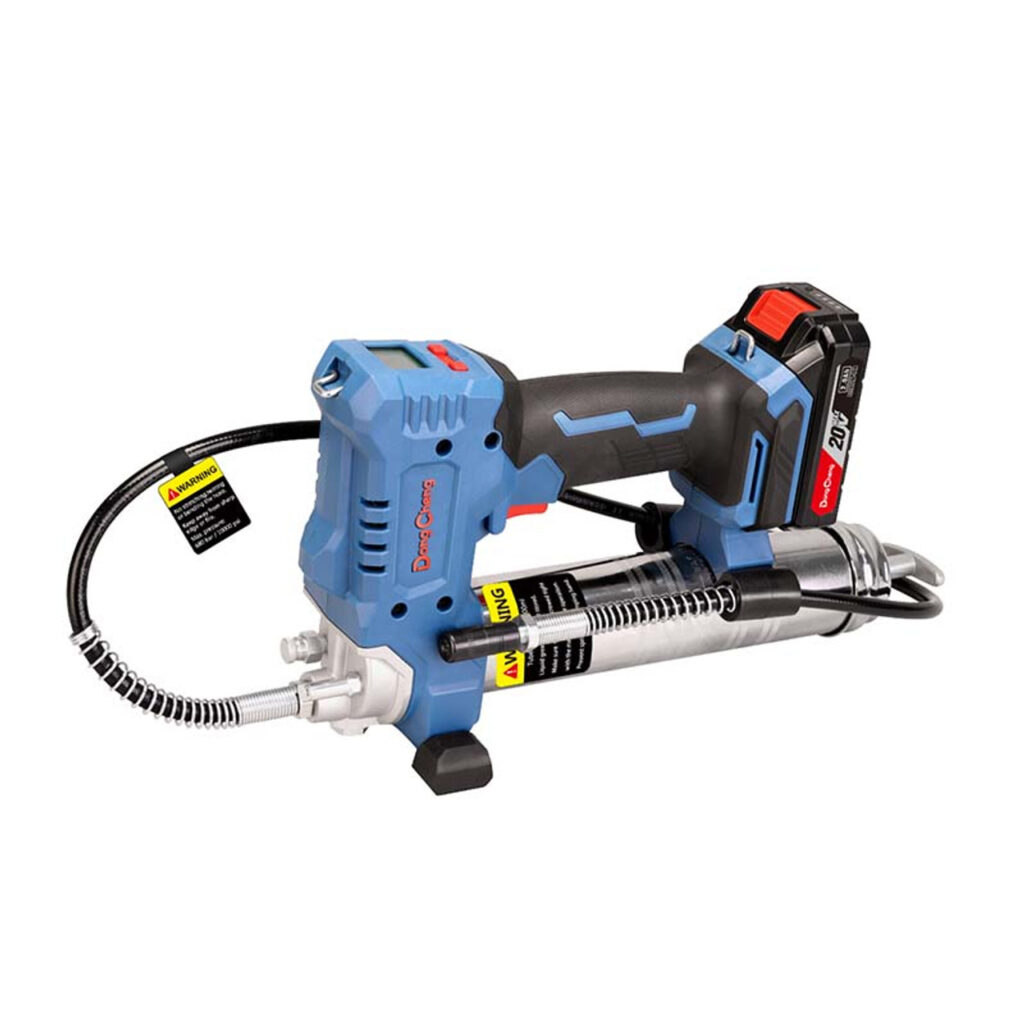Choosing the Right Grease for Your Grease Gun: Industrial Guide
Introduction
Grease guns are vital tools in industrial maintenance, allowing precise lubrication of machinery, bearings, joints, and mechanical systems. But even the best grease gun is only as effective as the grease it dispenses. Selecting the right grease type is critical, not just for performance, but also for equipment longevity and safety.
This guide helps technicians, plant engineers, and maintenance professionals navigate the world of industrial greases to ensure compatiblity, effectiveness, and durability in demanding operations.
Why Grease Type Matters
Not all greases are created equal. Each formulation has different characteristics, including:
- Thickener base (e.g., lithium, calcium, polyurea)
- Additives (for corrosion resistance, extreme pressure, or high-temp environments)
Consistency (NLGI grade)
Using the wrong grease can lead to bearing failure, increased friction, or system damage.


Key Factors in Selecting Grease for Industrial Applications
1. Operating Temperature Range
High-speed or heavy-load machinery demands greases with stable viscosity over wide temperature fluctuations.
2. Load-Carrying Capacity
For equipment under extreme pressure or continuous operation, choose greases with EP (Extreme Pressure) additives.
3. Environmental Exposure
Outdoor applications may need water-resistant or rust-inhibiting greases to handle humidity, washdowns, or chemical exposure.
4. Compatibility with Machinery
Always confirm grease is approved by equipment manufacturers to avoid sealing damage or lubrication failures.
Common Grease Types for Industrial Guns
Here’s a breakdown of commonly used industrial greases compatible with grease guns:
- Lithium-based grease: Multipurpose, high-temp resistant, and widely used in general machinery.
- Calcium-based grease: Excellent water resistance, ideal for humid or marine environments.
- Aluminum complex grease: High shear stability, used in food and pharmaceutical machinery (if NSF approved).
- Polyurea grease: Extended life and thermal stability for electric motors and high-temp applications.
For a more detailed breakdown, refer to our article on types of grease for industrial guns
Matching Grease Type with Application
To maximize performance and lifespan, the grease used must match the mechanical and environmental demands of the application. Below are a few examples:
Heavy Machinery & Construction Equipment
- Recommended Grease: Lithium or lithium-complex EP grease
- Reason: Excellent load-carrying capacity and water resistance, ideal for joints, bearings, and exposed parts.
High-Temperature Manufacturing Equipment
- Recommended Grease: Polyurea or aluminum complex
- Reason: Maintains stability under high heat, resists oxidation, and offers longer relubrication intervals.
Marine or Wet Environments
- Recommended Grease: Calcium sulfonate or aluminum complex grease
- Reason: Superior water resistance and corrosion protection.
Electric Motors and Bearings
- Recommended Grease: Polyurea-based
- Reason: Non-soap thickener, excellent shear stability, and oxidation resistance.
Tip: Always check OEM (Original Equipment Manufacturer) recommendations before selecting a grease for specialized applications.
Grease Gun Compatibility
Your chosen grease must also be suitable for your grease gun type. Here’s a guide:
| Grease Gun Type | Recommended Grease |
| Manual grease guns | Most standard lithium and calcium greases |
| Pneumatic grease guns | High-pressure lithium or EP greases |
| Battery-powered grease guns | Compatible with a wide range; ideal for thick or specialty greases |
DongCheng Cordless Grease Gun–DCGG500, for example, supports lithium, calcium, and aluminum-based greases, making it suitable for a wide range of industrial maintenance tasks.
Red Flags: Signs You’re Using the Wrong Grease
Using the wrong grease type can cause:
- Premature bearing wear or seizure
- Grease leakage or excessive buildup
- Overheating of components
- Equipment noise and vibration
- Contamination or separation of base oil and thickener
Best Practices for Grease Storage and Handling
Even the right grease can become ineffective if improperly stored. Follow these tips to preserve grease quality and ensure optimal equipment performance:
Storage Tips:
- Store grease in cool, dry locations away from direct sunlight and high temperatures.
- Keep containers sealed tightly to prevent contamination.
- Use color-coded or clearly labeled containers to avoid mixing grease types.
- Always rotate stock—use the first-in, first-out (FIFO) method.
Handling Tips:
- Avoid introducing contaminants by using clean, designated dispensing tools.
- Never scoop grease with dirty rags or hands.
Prevent cross-contamination—do not mix old grease with new unless they are the same type and formulation.
Conclusion
Choosing the right grease for your grease gun isn’t just about brand preference, it’s about matching grease properties with equipment demands and application conditions.
By:
- Understanding NLGI grades and base oils
- Matching grease types to operational needs
- Ensuring compatibility with your grease gun
- Following best storage and handling practices
You’ll reduce equipment wear, cut down on maintenance costs, and ensure optimal performance in every application.

